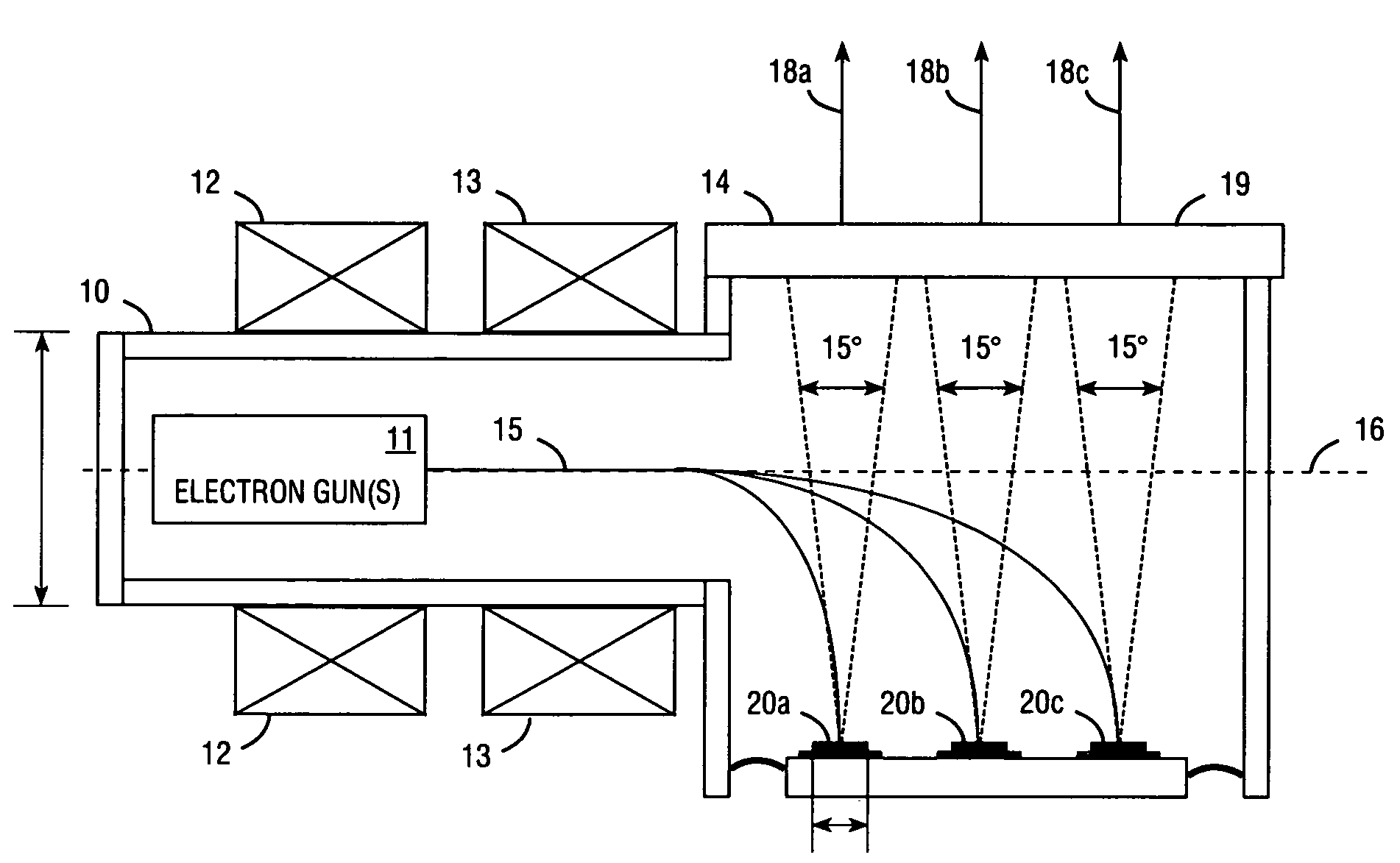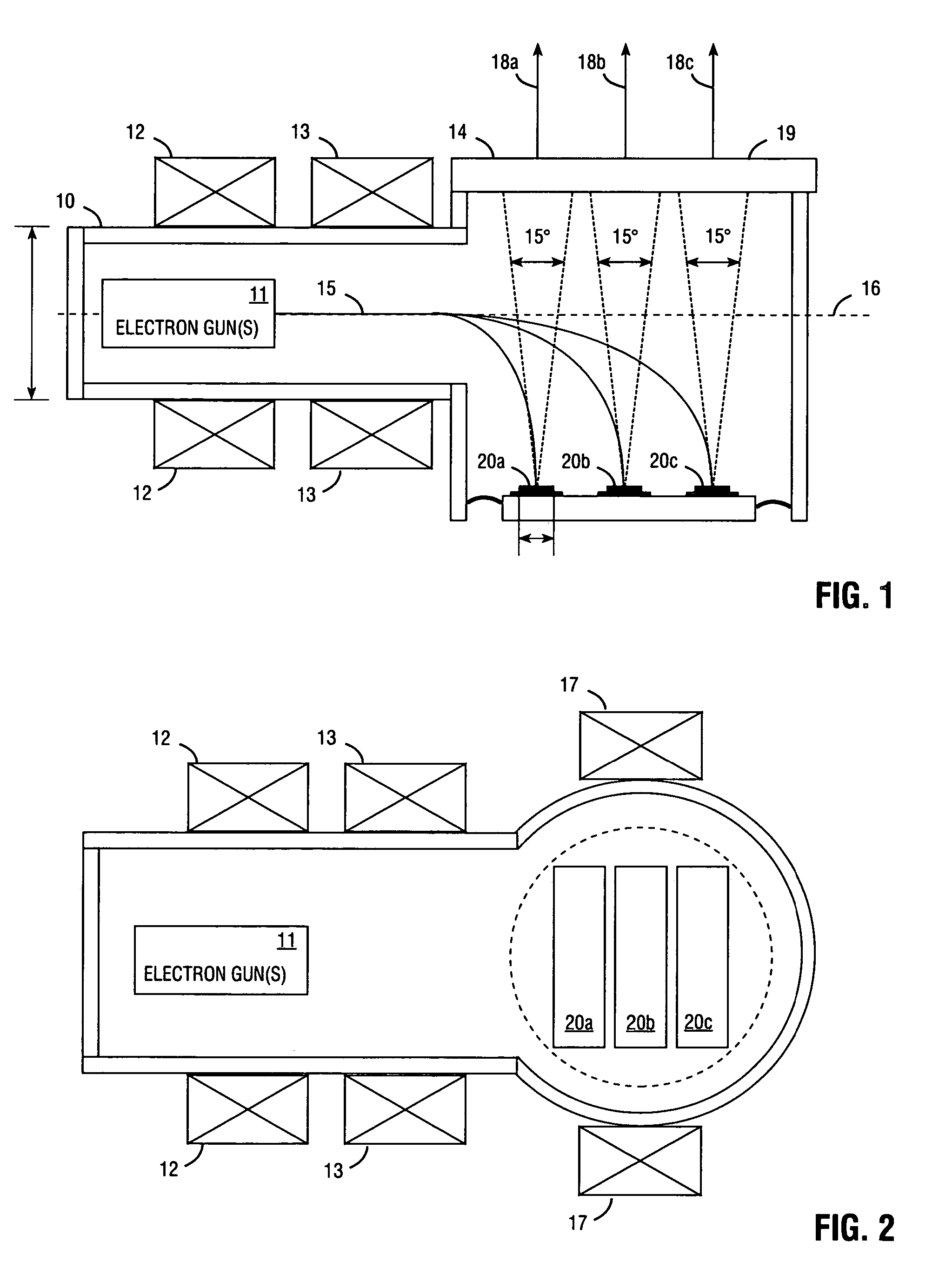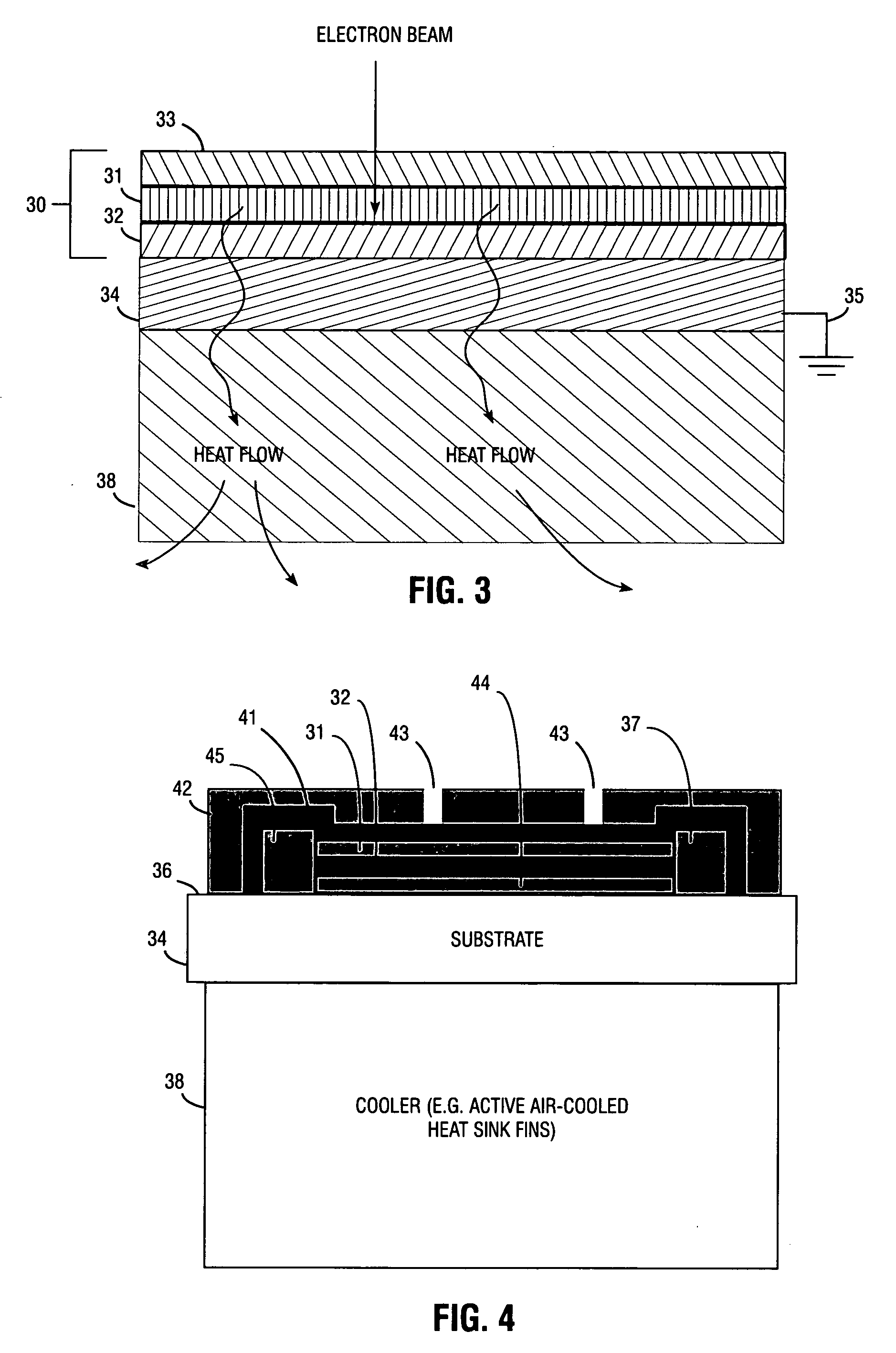Electron beam pumped laser light source for projection television
a laser light source and laser technology, applied in the direction of cathode-ray/electron-beam tube electrical connection, semiconductor laser, etc., can solve the problems of difficult and expensive to optically capture the emitted light, difficult and expensive modulation with an slm, and inability to meet the requirements of consumer projection televisions, etc., to achieve the effect of improving the overall performance and efficiency of the laser, high thermal conductivity, and easy to mak
- Summary
- Abstract
- Description
- Claims
- Application Information
AI Technical Summary
Benefits of technology
Problems solved by technology
Method used
Image
Examples
Embodiment Construction
[0033]This invention is described in the following description with reference to the Figures, in which like numbers represent the same or similar elements.
Glossary of Terms and Acronyms
[0034]The following terms and acronyms are used throughout the detailed description:[0035]eVCSEL electron beam-pumped vertical cavity surface emitting laser[0036]Laser-CRT (LCRT) a cathode ray tube with a laser faceplate[0037]CRT cathode ray tube[0038]e-beam electron beam emitted from an electron gun in a CRT[0039]electron beam spot the area within which the e-beam energy is concentrated on the laser faceplate[0040]electron beam the axis of electron beam emission from the electron gun[0041]emission axis[0042]orientation angle the angle of the faceplate with respect to the electron beam emission axis[0043]bending angle the angle through which the e-beam is bent before striking the faceplate[0044]CTE Coefficient of Thermal Expansion[0045]MQW multiple quantum well[0046]low-dimensional MQW two-dimensional...
PUM
 Login to View More
Login to View More Abstract
Description
Claims
Application Information
 Login to View More
Login to View More - R&D
- Intellectual Property
- Life Sciences
- Materials
- Tech Scout
- Unparalleled Data Quality
- Higher Quality Content
- 60% Fewer Hallucinations
Browse by: Latest US Patents, China's latest patents, Technical Efficacy Thesaurus, Application Domain, Technology Topic, Popular Technical Reports.
© 2025 PatSnap. All rights reserved.Legal|Privacy policy|Modern Slavery Act Transparency Statement|Sitemap|About US| Contact US: help@patsnap.com



